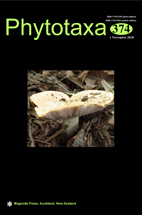Abstract
Taxonomic characterization by a polyphasic approach was carried out on two cyanobacteria, AP17 and AP24 isolated from soil biofilms of two separate islands, Lothian and Sagar respectively, of the Indian Sundarbans. The strains were studied morphologically by light microscopy, scanning and transmission electron microscopy. Growth responses to various salinities were recorded. Molecular data included sequencing and phylogenetic study of the 16S rRNA gene as well as analysis of the 14 regions of the 16S-23S ITS regions. Morphologically the strains were found to be non-heterocytous, having attenuated trichomes with a narrow, bent terminal cell without any crosswalls. Strains under investigation shared 99–100% 16S rRNA gene sequence similarity with Oxynema thaianum CCALA960, the type species of the novel Oxynema genus, recently separated from the Phormidium-Group I genus. However, cross walls in the apical portion of AP17 and AP24 were totally absent while the same was present in CCALA960. Additionally, optimal growth of AP17 and AP24 was recorded in 5–8% salinity and salinity above 14% inhibited growth of both strains, which were isolated from an intertidal environment; whereas O. thaianum CCALA960 which was found in a hypersaline environment could grow at 40% salinity. Insertion of 9 nucleotides in the D2 with spacer region, insertion of 2 nucleotides in the pre Box B spacer region, deletion of 2 nucleotides in the post Box B spacer region, deletion of 8 nucleotides in the D4 region, deletion of 8 nucleotides in V3 region and insertion of 2 nucleotides in the D5 region of the ITS sequences of AP17 and AP24 were observed in comparison to the analogous regions of CCALA960. Structural details of Box B helices of AP17 and AP24 revealed that although their lengths were identical with the reference, their sequences were completely different from CCALA960. Four nucleotide substitutions were observed in different positions in the Box B helix of O. thaianum CCALA960. Secondary structures of the V3 regions of AP17 and AP24 (containing 51 nucleotides) showed a small terminal bulge and a bigger bilateral bulge while the analogous structure of O. thaianum CCALA 960 (comprising of 59 nucleotides) showed one additional bilateral bulge in comparison to AP17 and AP24. Therefore, based on morphological, ecological and molecular differences in comparison to O. thaianum CCALA960, isolates AP17 and AP24 should be considered as a second novel species in the Oxynema genus, for which the name Oxynema aestuarii sp. nov. is proposed.

